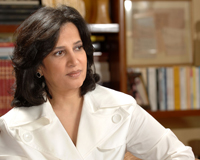Contact Center
.
07 September 2015
H.E Visits Paris to attend Arab World Institute Event and to Support Versailles Palace Restoration Works


As part of the kingdom of Bahrain’s efforts to use culture as a bridge to communicate between peoples and civilizations, H.E Shaikha Mai bint Mohammed Al-Khalifa, president Bahrain’s Culture & Archaeology Authority, visited Paris on September 7, 2015 to attend the inauguration of the 'Osiris, MystèresEngloutis d'Egypte' at Institut du Monde Arabe, by the president of the French Republic Francois Hollande. H.E. also participated in a ceremony to support the restoration of Versailles Palace, Paris, France.
‘Osiris, Sunken Mysteries of Egypt’ Exhibition
The exhibition will run on until January 2016 and it is an invitation to plunge into a forgotten world as you explore the latest underwater discoveries of Franck Goddio and his team. The exhibition presents over 250 objects found during the last seven years of archaeological excavations made by the French underwater archaeology team. These works have never before been exhibited in public. They will be presented alongside objects on loan from the museums of Cairo and Alexandria. The exhibition aims to revive one of the great legends of the foundation of the Egyptian civilization, that of Osiris.
Osiris was a legendary king of ancient Egypt. Killed by his brother Seth, legend has it that his body was dismembered into 14 pieces and thrown into the Nile. Isis put the king's body back together and brought him back to life. Together they conceived Horus. Osiris then became the master of the afterlife and Horus the heir to Egypt. In ancient Egypt, ceremonies were held in celebration of Osiris, notably in the towns of Thonis, Heracleion and Canope.
Speaking on the occasion, H.E Shaikha Mai bint Mohammad Al-Khalifa, stressed the importance of such exhibitions, which help to document the human history shared by all and play a vital role in revival of the cultural heritage of humanity. H.E added that the exhibition aims to document the development of a diverse art and cultural heritage that absorbed elements from various influential points in time. Such exhibitions are not only an effective tool to spread and highlight a country’s culture and traditions, but more importantly, they serve as a dialogue between peoples and civilizations with the entire cultural and scientific heritage that comes with it, H.E argued.
The exhibition aims to take the visitor into a hidden mysterious world of the ancient Egyptian civilization in addition to a historical review of the marine excavation periods. The unbelievable remains of the temples of Herakleion and Canopus, where rites and religious ceremonies occurred in complete secrecy, will be revealed. The remains of those included will be on view as well.
The visitor will also be invited to live the famous nautical procession of Osiris's barge which each year escorted the deity in its journey to the beyond.
Versailles Palace, a history of French cultural tourism
While in Paris, H.E Shaikha Mai attended another cultural event; sponsoring and supporting the restoration of Versailles Palace. H.E said that the preservation of universal heritage buildings is a vital component of urban revitalization efforts, given that heritage tourism is often rooted in historic buildings. These powerful, tangible connections to our past are the ways in which people today come in touch with the past. H.E highlighted the importance of the historical relations between the kingdom of Bahrain and the Republic of France and the mutual cooperation through many fields, such archaeological expeditions and teams, music, arts, in addition to French presence in all annual cultural festivals organized in Bahrain.
The Palace of Versailles, a former French royal residence and center of government, is now a national landmark. It is located in the city of Versailles, Yvelines department, Île-de-France region, northern France, 20 km west-southwest of Paris. In 1837, Louis-Philippe, king of France, could at last officially open the historical galleries museum that he wanted to install in Versailles. This was an outstanding event in the history of the Chateau. As the center of the French court, Versailles was one of the grandest theatres of European absolutism.







